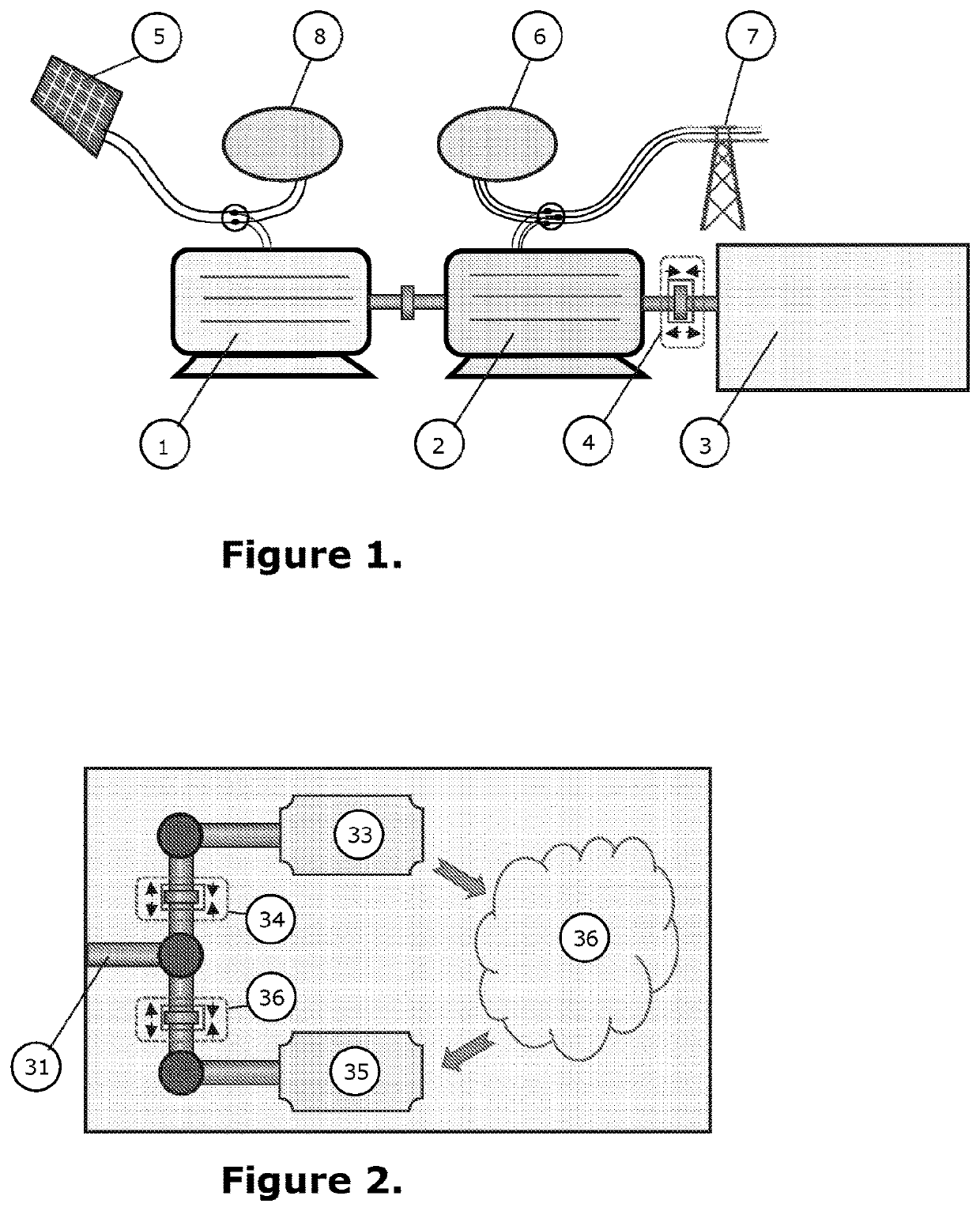System for Power Conversion and Energy Storage
a power conversion and energy storage technology, applied in the direction of climate sustainability, ac network load balancing, greenhouse gas reduction, etc., can solve the problems of power electronic converters not being able to provide fault currents easily, break circuits, and loss incurred in the ac-dc conversion of the new system, so as to reduce cost and cost advantage, simple rectifier just
- Summary
- Abstract
- Description
- Claims
- Application Information
AI Technical Summary
Benefits of technology
Problems solved by technology
Method used
Image
Examples
Embodiment Construction
[0040]FIG. 1 shows a schematic diagram of the simplest representation of this system. This figure shows a DC electrical machine (1), such as a rotating DC motor / generator, comprising a DC rotor (along with other typical DC electrical machine components such as a stator and the like) directly-coupled to an AC electrical machine (2). The AC electrical machine 2 is also typically a rotating AC motor / generator and comprises an AC rotor (and other AC electrical machine components such as a stator and the like). The DC rotor and the AC rotor are mechanically coupled and form a composite electrical machine.
COMPONENTS OF THIS INVENTION
[0041]The essential components of the system of this invention are:[0042](1) A DC electrical machine[0043](2) An AC electrical machine coupled directly to the above DC machine[0044](3) A (thermo-)mechanical energy storage system (TMESS)[0045](4) A clutch capable of coupling / de-coupling the pair of electrical machines from the central shaft of the (thermo-)mech...
PUM
 Login to View More
Login to View More Abstract
Description
Claims
Application Information
 Login to View More
Login to View More - R&D
- Intellectual Property
- Life Sciences
- Materials
- Tech Scout
- Unparalleled Data Quality
- Higher Quality Content
- 60% Fewer Hallucinations
Browse by: Latest US Patents, China's latest patents, Technical Efficacy Thesaurus, Application Domain, Technology Topic, Popular Technical Reports.
© 2025 PatSnap. All rights reserved.Legal|Privacy policy|Modern Slavery Act Transparency Statement|Sitemap|About US| Contact US: help@patsnap.com

